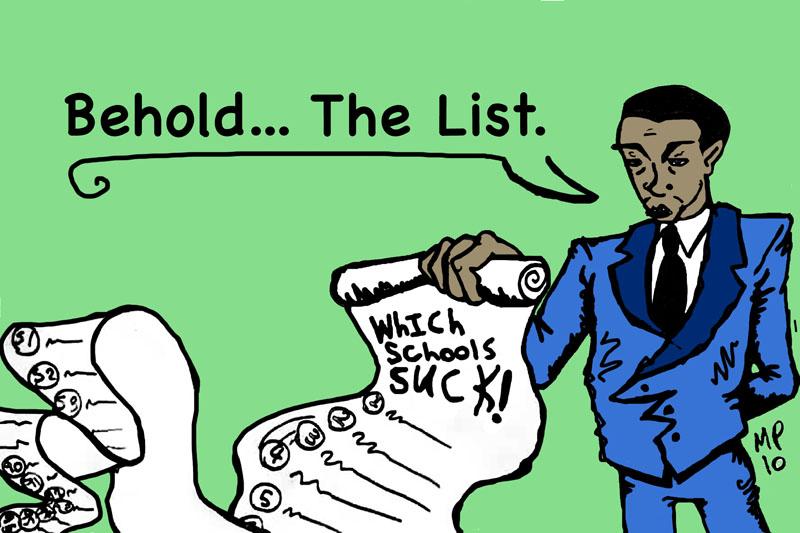As we all progress to new levels of education, problems undoubtedly occur and often our typical response is to blame these problems on the actions of previous educational institutions.
In middle school, the phrase, “Don’t play games, this isn’t recess anymore,” is echoed. In high school, “Stop being so immature, we are not in middle school anymore,” was the phrase of choice. In college, blame is placed on high schools with the statement, “Get over it; we are not in high school anymore.” The blame-game continues well into life, but really the question is: “Is it appropriate?”
Part of President Obama’s agenda of “change” is to brings schools, falling short of standards, up to par.
In order to get the ball rolling, California released a list of 187 low-performing schools on Monday.
The criteria used to develop the list are narrowed down to the school’s academic performance and graduation rate. The process started off, though, by sorting schools into groups based on whether a school was identified as being in Program Improvement (PI) for the 2009-10 school year. This section of schools was labeled Tier I and included three groups — elementary schools, middle schools and high schools.
Schools were also divided into groups based on school eligibility for funds. Schools that did not receive these funds were the focus. Tier II include these schools. This list included high schools and middle schools.
The bottom five percent of each group determined the list of 187 schools. The state’s Department of Education will require these schools to take one of four steps.
The first possibility would be to restructure the school. Replacing the principal and increasing instruction time are listed among the changes to take place. Students would be given more attention by intensifying their actual learning time.
Another option is to close the school entirely and send the students to other schools in the district. However, this option would be unfair to both sides in the situation. The new school would have to change to accommodate more students and the new students would most likely be displaced.
Thirdly, the school can decide to release no more than 50 percent of the pre-existing staff, giving the principal more power to improve the school.
Lastly, the school could reopen as a charter school. Hopefully none of the schools take this route as it only creates a distinction between them and the other public schools. By lowering standards, schools strengthen the idea that not all educational institutions provide equal opportunities for students across the state.
It is up to the superintendent to determine the optimal choice for their school and address their case to the Department of Education by June 1.
Nowhere in the list of possible reform routes does it emphasize the students and what they need to do. Regardless of the previous schools we attended, we all sat next to the slackers — and maybe we were the slackers in the classroom. Despite this, we all know the amount of work and drive it takes to move on to higher education.
While a low-performing school may negatively affect many students, some would underperform anywhere. The blame-game just makes the students’ situations worse.
Success in the classroom is ultimately up to the student. A low-performing school can have good students.
Nevertheless, between the slackers and the overachievers there are a majority of students who need all the resources they can get.
Legislators need to equip primary schools with all the resources they need in order to produce a well-prepared, well-equipped citizenry.
This list, while it may have its objections, is a good step in bettering our primary and secondary education systems. Strong primary and secondary schools are integral to any functioning society.




